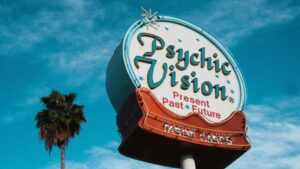In literary nonfiction, no form is quite as complicated as the lyric essay. Lyrical essays explore the elements of poetry and creative nonfiction in complex and experimental ways, combining the subject matter of autobiography with poetry’s figurative devices and musicality of language.
For both poets and creative nonfiction writers, lyric essays are a gold standard of experimentation and language, but conquering the form takes lots of practice. What is a lyric essay, and how do you write one? Let’s break down this challenging CNF form, with lyric essay examples, before examining how you might approach it yourself.
Lyric Essay: Contents
What is a lyric essay?
The lyric essay combines the autobiographical information of a personal essay with the figurative language, forms, and experimentations of poetry. In the lyric essay, the rules of both poetry and prose become suggestions, because the form of the essay is constantly changing, adapting to the needs, ideas, and consciousness of the writer.
Lyric essay definition: The lyric essay combines autobiographical writing with the figurative language, forms, and experimentations of poetry.
Lyric essays are typically written in a poetic prose style. (We’ll expand on the difference between prose poetry and lyric essay shortly.) Lyric essays employ many of the poetic devices that poets use, including devices of repetition and rhetorical devices in literature.
That said, there are few conventions for the lyric essay, other than to experiment, experiment, experiment. While the form itself is an essay, there’s no reason you can’t break the bounds of expression.
One tactic, for example, is to incorporate poetry into the essay itself. You might start your essay with a normal paragraph, then describe something specific through a sonnet or villanelle, then express a different idea through a POV shift, a list, or some other form. Lyric essays can also borrow from the braided essay, the hermit crab, and other forms of creative nonfiction.
In truth, there’s very little that unifies all lyric essays, because they’re so wildly experimental. They’re also a bit tricky to define—the line between a lyric essay and the prose poem, in particular, is very hazy.
Rather than apply a one-size-fits-all definition for the lyric essay, which doesn’t exist, let’s pay close attention to how lyric essayists approach the open-ended form.
There are few conventions for the lyric essay, other than to experiment, experiment, experiment
Article continues below…
Lyric Essay Writing Courses We Think You'll Love
We've hand-picked these courses to help you flourish as a writer.

Creative Nonfiction and the Personal Essay
Gretchen Clark pick axes her way into the volcanic marriage of real life and fiction. Weekly writing with incisive feedback.
Find Out More
Speculative Nonfiction: Writing Beyond the Known
Explore the emerging field of speculative nonfiction—nonfiction on the edges of what is known—and discover new truths as you write...
Find Out More
True Stories, Well Told: The Art of Essay Writing
Explore the literary essay - from the conventional to the experimental, the journalistic to essays in verse - while writing...
Find Out MoreOr click below to view all courses.
See CoursesArticle continues…
Personal essay vs. lyric essay: An example of each
At its simplest, the lyric essay’s prose style is different from that of the personal essay, or other forms of creative nonfiction.
Personal essay example
Here are the opening two paragraphs from Beth Ann Fennelly’s personal essay “I Survived the Blizzard of ’79.”
“We didn’t question. Or complain. It wouldn’t have occurred to us, and it wouldn’t have helped. I was eight. Julie was ten.
We didn’t know yet that this blizzard would earn itself a moniker that would be silk-screened on T-shirts. We would own such a shirt, which extended its tenure in our house as a rag for polishing silver.”
The prose in this personal essay excerpt is descriptive, linear, and easy to understand. Fennelly gives us the information we need to make sense of her world, as well as the foreshadow of what’s to come in her essay.
Lyric essay example
Now, take this excerpt from a lyric essay, “Life Code” by J. A. Knight:
“The dream goes like this: blue room of water. God light from above. Child’s fist, foot, curve, face, the arc of an eye, the symmetry of circles… and then an opening of this body—which surprised her—a movement so clean and assured and then the push towards the light like a frog or a fish.”
The prose in Knight’s lyric essay cannot be read the same way as a personal essay might be. Here, Knight’s prose is a sort of experience—a way of exploring the dream through language as shifting and ethereal as dreams themselves. Where the personal essay transcribes experiences, the lyric essay creates them.
Where the personal essay transcribes experiences, the lyric essay creates them.
For more examples of the craft, The Seneca Review and Eastern Iowa Review both have a growing archive of lyric essays submitted to their journals. In essence, there is no form to a lyric essay—rather, form and language are experimented with interchangeably, guided only by the narrative you seek to write.
Lyric Essay Vs Prose Poem
Lyric essays are commonly confused with prose poetry. In truth, there is no clear line separating the two, and plenty of essays, including some of the lyric essay examples in this article, can also be called prose poems.
Well, what’s the difference? A prose poem, broadly defined, is a poem written in paragraphs. Unlike a traditional poem, the prose poem does not make use of line breaks: the line breaks simply occur at the end of the page. However, all other tactics of poetry are in the prose poet’s toolkit, and you can even play with poetry forms in the prose poem, such as writing the prose sonnet.
Lyric essays also blend the techniques of prose and poetry. Here are some general differences between the two:
- Lyric essays tend to be longer. A prose poem is rarely more than a page. Some lyric essays are longer than 20 pages.
- Lyric essays tend to be more experimental. One paragraph might be in prose, the next, poetry. The lyric essay might play more with forms like lists, dreams, public signs, or other types of media and text.
- Prose poems are often more stream-of-conscious. The prose poet often charts the flow of their consciousness on the page. Lyric essayists can do this, too, but there’s often a broader narrative organizing the piece, even if it’s not explicitly stated or recognizable.
The two share many similarities, too, including:
- An emphasis on language, musicality, and ambiguity.
- Rejection of “objective meaning” and the desire to set forth arguments.
- An unobstructed flow of ideas.
- Suggestiveness in thoughts and language, rather than concrete, explicit expressions.
- Surprising or unexpected juxtapositions.
- Ingenuity and play with language and form.
In short, there’s no clear dividing line between the two. Often, the label of whether a piece is a lyric essay or a prose poem is up to the writer.
Lyric Essay Examples
The following lyric essay examples are contemporary and have been previously published online. Pay attention to how the lyric essayists interweave the essay form with a poet’s attention to language, mystery, and musicality.
“Lodge: A Lyric Essay” by Emilia Phillips
Retrieved here, from Blackbird.
This lush, evocative lyric essay traverses the American landscape. The speaker reacts to this landscape finding poetry in the rundown, and seeing her own story—family trauma, religion, and the random forces that shape her childhood. Pay attention to how the essay defies conventional standards of self-expression. In between narrative paragraphs are lists, allusions, memories, and the many twists and turns that seem to accompany the narrator on their journey through Americana.
“Spiral” by Nicole Callihan
Retrieved here, from Birdcoat Quarterly.
Notice how this gorgeous essay evolves down the spine of its central theme: the sleepless swallows. The narrator records her thoughts about the passage of time, her breast examination, her family and childhood, and the other thoughts that arise in her mind as she compares them, again and again, to the mysterious swallows who fly without sleep. This piece demonstrates how lyric essays can encompass a wide array of ideas and threads, creating a kaleidoscope of language for the reader to peer into, come away with something, peer into again, and always see something different.
“Star Stuff” by Jessica Franken
Retrieved here, from Seneca Review.
This short, imagery-driven lyric essay evokes wonder at our seeming smallness, our seeming vastness. The narrator juxtaposes different ideas for what the body can become, playing with all our senses and creating odd, surprising connections. Read this short piece a few times. Ask yourself, why are certain items linked together in the same paragraph? What is the train of thought occurring in each new sentence, each new paragraph? How does the final paragraph wrap up the lyric essay, while also leaving it open ended? There’s much to interpret in this piece, so engage with it slowly, read it over several times.
5 approaches to writing the lyric essay
This form of creative writing is tough for writers because there’s no proper formula for writing it. However, if you have a passion for imaginative forms and want to rise to the challenge, here are several different ways to write your essay.
1. Start with your narrative
Writing the lyrical essay is a lot like writing creative nonfiction: it starts with getting words on the page. Start with a simple outline of the story you’re looking to write. Focus on the main plot points and what you want to explore, then highlight the ideas or events that will be most difficult for you to write about. Often, the lyrical form offers the writer a new way to talk about something difficult. Where words fail, form is key. Combining difficult ideas and musicality allows you to find the right words when conventional language hasn’t worked.
Emilia Phillips’ lyric essay “Lodge” does exactly this, letting the story’s form emphasize its language and the narrative Phillips writes about dreams, traveling, and childhood emotions.
2. Identify moments of metaphor and figurative language
The lyric essay is liberated from form, rather than constrained by it. In a normal essay, you wouldn’t want your piece overrun by figurative language, but here, boundless metaphors are encouraged—so long as they aid your message. For some essayists, it might help to start by reimagining your story as an extended metaphor.
A great example of this is Zadie Smith’s essay “The Lazy River,” which uses the lazy river as an extended metaphor to criticize a certain “go with the flow” mindset.
Use extended metaphors as a base for the essay, then return to it during moments of transition or key insight. Writing this way might help ground your writing process while giving you new opportunities to play with form.
3. Investigate and braid different threads
Just like the braided essay, lyric essays can certainly braid different story lines together. If anything, the freedom to play with form makes braiding much easier and more exciting to investigate. How can you use poetic forms to braid different ideas together? Can you braid an extended metaphor with the main story? Can you separate the threads into a contrapuntal, then reunite them in prose?
A simple example of threading in lyric essay is Jane Harrington’s “Ossein Pith.” Harrington intertwines the “you” and “I” of the story, letting each character meet only when the story explores moments of “hunger.”
Whichever threads you choose to write, use the freedom of the lyric essay to your advantage in exploring the story you’re trying to set down.
4. Revise an existing piece into a lyric essay
Some CNF writers might find it easier to write their essay, then go back and revise with the elements of poetic form and figurative language. If you choose to take this route, identify the parts of your draft that don’t seem to be working, then consider changing the form into something other than prose.
For example, you might write a story, then realize it would greatly benefit the prose if it was written using the poetic device of anaphora (a repetition device using a word or phrase at the beginning of a line or paragraph). Chen Li’s lyric essay “Baudelaire Street” does a great job of this, using the anaphora “I would ride past” to explore childhood memory.
When words don’t work, let the lyrical form intervene.
5. Write stream-of-conscious
Stream-of-consciousness is a writing technique in which the writer charts, word-for-word, the exact order of their unfiltered thoughts on the page.
If it isn’t obvious, this is easier said than done. We naturally think faster than we write, and we also have a tendency to filter our thoughts as we think them, to the point where many thoughts go unconsciously unnoticed. Unlearning this takes a lot of practice and skill.
Nonetheless, you might notice in the lyric essay examples we shared how the essayists followed different associations with their words, one thought flowing naturally into the next, circling around a subject rather than explicitly defining it. The stream-of-conscious technique is perfect for this kind of writing, then, because it earnestly excavates the mind, creating a kind of Rorschach test that the reader can look into, interpret, see for themselves.
This technique requires a lot of mastery, but if you’re keen on capturing your own consciousness, you may find that the lyric essay form is the perfect container to hold it in.
Closing thoughts on the lyric essay form
Creative nonfiction writers have an overt desire to engage their readers with insightful stories. When language fails, the lyrical essay comes to the rescue. Although this is a challenging form to master, practicing different forms of storytelling could pave new avenues for your next nonfiction piece. Try using one of these different ways to practice the lyric craft, and get writing your next CNF story!
Want to explore the lyric essay further? See our lyric essay writing course with instructor Gretchen Clark.


[…] Sean “Writing Your Truth: Understanding the Lyric Essay.” writers.com. https://writers.com/understanding-the-lyric-essay published 19 May, 2020/ accessed 13 Oct, […]
[…] https://writers.com/understanding-the-lyric-essay […]
[…] Sean “Writing Your Truth: Understanding the Lyric Essay.” writers.com. https://writers.com/understanding-the-lyric-essay published 19 May, 2020/ accessed 13 Oct, […]
I agree with every factor that you have pointed out. Thank you for sharing your beautiful thoughts on this.
A personal essay is writing that shares an interesting, thought-provoking, sometimes entertaining, and humorous piece that is often drawn from the writer’s personal experience and at times drawn from the current affairs of the world.
[…] been wanting to learn more about lyric essay, and this seems a natural transition from […]
thanks for sharing
Thanks so much for this. Here is an updated link to my essay Spiral: https://www.birdcoatquarterly.com/post/nicole-callihan
I’m interested in learning about essays to write my memoir, so I shall be back.
[…] helpful resources I’ve found so far: The Lyric Essay: Examples and Writing Techniques | Writers.com, Lyric Essays – Purdue OWL® – Purdue University, An Insider’s Guide to Writing […]
[…] Writing Without Limits: Understanding the Lyric Essay […]